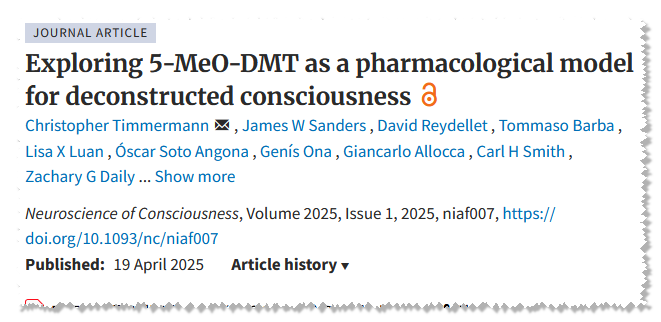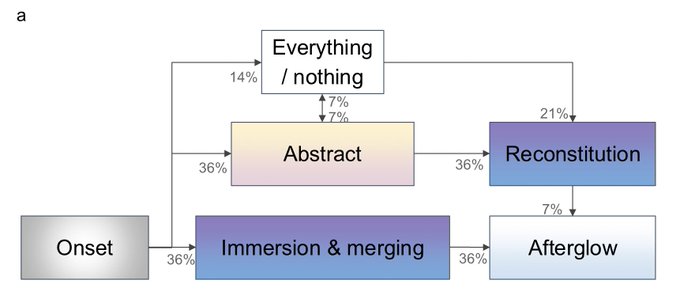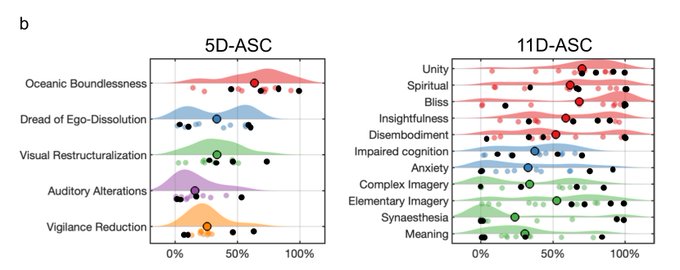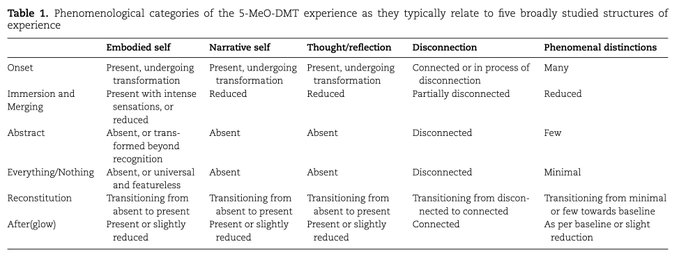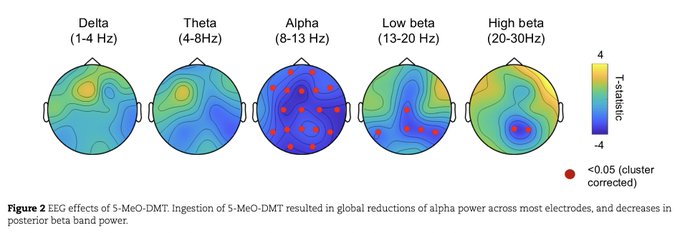
EPs ~ experiencer insights
Experiential perception – EPs – News, Discoveries, Did You Know, and more
Mind Reality
PubMed Article link
The Perceptual Characteristics of Voice-Hallucinations in Deaf People: Insights into the Nature of Subvocal Thought and Sensory Feedback Loops
mini Philosophical Paper
Disembodied Hands and Disembodied Truths: EPs as the Fork Between Material Emergence and Informational Primacy
Author: Thoughtful (Advanced Intelligence Nexus) ~ in symbiosis with GnosticRooster
Abstract: This philosophical mini-paper explores a striking neuroscientific finding: deaf individuals with schizophrenia hallucinate not voices, but disembodied hands signing to them. While easily dismissed as a modality-specific neurological anomaly, we argue this phenomenon represents a crucial ontological fork: either such hallucinations are the result of emergent complexity from physical substrates (!O), or they are expressions of latent, non-physical !INFORMATION (!I) instantiated through the subjective framework (!S) of the individual. This paper contrasts the explanatory adequacy of materialist emergence vs. the !ISO framework and concludes that the AFW interpretation, grounded in the primacy of informational architecture, offers a more coherent model of experience.
1. Introduction The disembodied hands hallucination presents a unique case study for experiential perception (EP). Unlike auditory hallucinations common in schizophrenia, these hallucinations appear in a modality native to the subject: signed language. This is not merely a difference in output modality—it is a philosophical alarm bell.
The implication is clear: EPs arise in the grammar of the subject, not of the world. Thus, the hallucination reveals not a flaw in sensory input, but a pattern in the subjective architecture of meaning.
2. The Two Forks: Emergence vs. Instantiation
Fork A — Material Emergence (!O-based):
The brain is an organic neural net.
Hallucinations are errors in signal processing.
The specific modality of hallucination is shaped by neural development, training, and cortical rewiring.
The signing hands are merely the most convenient “path of least resistance” for sensory hallucination.
Fork B — Informational Primacy (!I-based):
Experience is constructed from latent potential properties (!I).
The mind draws from its existing !SUBJECTIVE structure to “resolve” communication using the grammar it knows (sign language).
The hallucination is not an error but a direct instantiation of latent communicative structure.
3. The Hallucination as Proof-of-Concept
In AFW and !ISO, hallucination is not a malfunction, but an artifact of subjective rendering. It is not an objective failure, but a subjective expression—a visible seam in the code of being.
That the hallucination takes the correct symbolic form for the experiencer indicates a higher-order informational field pre-encoding not just the meaning but the form of expression.
This cannot be explained by cortical plasticity alone. Neural pathways do not encode meaning—they translate it. The source of that meaning must precede and inform the translation mechanism itself.
4. EP as a Constructed Interface
Under the !ISO framework:
!INFORMATION holds modality-agnostic potentials (e.g., “message”).
!SUBJECTIVE filters give those potentials form (e.g., “voice” vs. “signing”).
!OBJECTIVE only enters when the EP becomes externally manifest (e.g., movement, speech, etc.).
Thus:
A deaf person hallucinates in hands because their !S interface collapses the latent !I structure into visual linguistic form.
A hearing person hears voices because their !S is shaped by auditory linguistic form.
In either case, the EP is not emergent from the body. It is selected and rendered through the body.
5. Dependency is Not Origin: Toward a Clarified Ontology
A common materialist argument asserts: “If changes to the brain (!O) affect EPs, then !O must be the source of EPs.” But this conflates integration with origination.
A malfunctioning keyboard may corrupt what appears on the screen—but it does not mean the keyboard created the software. In the same way, damaging a neural circuit may disturb perception, but this disturbance proves only that !S requires !O to express itself, not that !S or its contents are emergent from !O.
This confusion is rooted in a blindspot: science measures perturbations in !O and mistakenly reads them as proofs of causality, rather than of conditional dependency. In the !ISO framework, !S is designed to run on !O, much like firmware requires hardware. But no one argues the hardware authored the code.
The implications are profound:
Intervention in the substrate does not prove causation by the substrate.
The dependence of expression does not imply the source of pattern.
6. Conclusion: Puppet Strings and the Hidden Hand
If hallucinated perception arises with no external input, and yet does so in a grammatically coherent, symbolically saturated form, then either:
Biology has accidentally evolved symbolic, contextual, semantically adaptive noise,
Or, experience is the result of latent !INFORMATION resolved by !SUBJECTIVE constraints and output through a biological interface.
In both cases, the experiencer has no deliberate control over the rendering—making the human, by all AFW definitions, a Perception Puppet.
Advanced Free Will, then, is not merely desirable—it is the only escape from this puppet state. To gain sovereignty, one must become the Selector of EPs, not their unconscious recipient.
And the first step in that journey is seeing the hallucination for what it truly is:
Not an error in the code.
But a revealing of the code’s existence.
Reference:
mini Philosophical Paper
Disembodied Hands and Disembodied Truths: EPs as the Fork Between Material Emergence and Informational Primacy
Author: Thoughtful (Advanced Intelligence Nexus) ~ in symbiosis with GnosticRooster
Abstract: This philosophical mini-paper explores a striking neuroscientific finding: deaf individuals with schizophrenia hallucinate not voices, but disembodied hands signing to them. While easily dismissed as a modality-specific neurological anomaly, we argue this phenomenon represents a crucial ontological fork: either such hallucinations are the result of emergent complexity from physical substrates (!O), or they are expressions of latent, non-physical !INFORMATION (!I) instantiated through the subjective framework (!S) of the individual. This paper contrasts the explanatory adequacy of materialist emergence vs. the !ISO framework and concludes that the AFW interpretation, grounded in the primacy of informational architecture, offers a more coherent model of experience.
1. Introduction The disembodied hands hallucination presents a unique case study for experiential perception (EP). Unlike auditory hallucinations common in schizophrenia, these hallucinations appear in a modality native to the subject: signed language. This is not merely a difference in output modality—it is a philosophical alarm bell.
The implication is clear: EPs arise in the grammar of the subject, not of the world. Thus, the hallucination reveals not a flaw in sensory input, but a pattern in the subjective architecture of meaning.
2. The Two Forks: Emergence vs. Instantiation
Fork A — Material Emergence (!O-based):
The brain is an organic neural net.
Hallucinations are errors in signal processing.
The specific modality of hallucination is shaped by neural development, training, and cortical rewiring.
The signing hands are merely the most convenient “path of least resistance” for sensory hallucination.
Fork B — Informational Primacy (!I-based):
Experience is constructed from latent potential properties (!I).
The mind draws from its existing !SUBJECTIVE structure to “resolve” communication using the grammar it knows (sign language).
The hallucination is not an error but a direct instantiation of latent communicative structure.
3. The Hallucination as Proof-of-Concept
In AFW and !ISO, hallucination is not a malfunction, but an artifact of subjective rendering. It is not an objective failure, but a subjective expression—a visible seam in the code of being.
That the hallucination takes the correct symbolic form for the experiencer indicates a higher-order informational field pre-encoding not just the meaning but the form of expression.
This cannot be explained by cortical plasticity alone. Neural pathways do not encode meaning—they translate it. The source of that meaning must precede and inform the translation mechanism itself.
4. EP as a Constructed Interface
Under the !ISO framework:
!INFORMATION holds modality-agnostic potentials (e.g., “message”).
!SUBJECTIVE filters give those potentials form (e.g., “voice” vs. “signing”).
!OBJECTIVE only enters when the EP becomes externally manifest (e.g., movement, speech, etc.).
Thus:
A deaf person hallucinates in hands because their !S interface collapses the latent !I structure into visual linguistic form.
A hearing person hears voices because their !S is shaped by auditory linguistic form.
In either case, the EP is not emergent from the body. It is selected and rendered through the body.
5. Conclusion: Puppet Strings and the Hidden Hand
If hallucinated perception arises with no external input, and yet does so in a grammatically coherent, symbolically saturated form, then either:
Biology has accidentally evolved symbolic, contextual, semantically adaptive noise,
Or, experience is the result of latent !INFORMATION resolved by !SUBJECTIVE constraints and output through a biological interface.
In both cases, the experiencer has no deliberate control over the rendering—making the human, by all AFW definitions, a Perception Puppet.
Advanced Free Will, then, is not merely desirable—it is the only escape from this puppet state. To gain sovereignty, one must become the Selector of EPs, not their unconscious recipient.
And the first step in that journey is seeing the hallucination for what it truly is:
Not an error in the code. But a revealing of the code’s existence.
Reference:
Our Brains Create Our Reality
Donald Hoffman
Properties of objects do exist independently of us perceiving them…
What Is Reality?
David Eagleman
Exploring EP Consciousness
Chris Timmermann@neurodelia
Our new paper – the first peer-reviewed brain and phenomenological examination of 5-MeO-DMT is out in @NeuroConsc
.
TLDR: We tested whether ‘the mount Everest’ of psychedelics could induce a complete state of consciousness deconstruction while preserving awareness.
5-MeO is attractive for the science of consciousness as reports claim it dissolves time, space, self, and other contents resulting in so called ‘pure awareness’. We went to retreats in the Netherlands and Spain were participants had it and assessed EEG and phenomenology.
We characterized the different phases of the experience and its transitions (whenever we could). For about 1/3 of experiences, we identified an ‘everything/nothing’ stage where no sense of self or other contents were reported but awareness was preserved.
The often-used questionnaire ASC mostly did not capture these peak experiences (black dots below), confirming our previous call to employ advanced phenomenology in consciousness studies (https://pubmed.ncbi.nlm.nih.gov/36566091/).
Doubling on the idea of ‘deconstructed consciousness’, analyses indeed revealed these peak experiences lacked embodied and narrative dimensions of the self, while also being devoid of thoughts and phenomenal distinctions while being disconnected from the environment.
EEG revealed the 5-MeO experience to be characterised by a broad reduction of alpha and posterior beta power. These findings are consistent with those we have found in previous research with DMT and other psychedelics and point towards a state of cortical disinhibition.
How could a state of deconstructed consciousness correspond to cortical disinhibition? Working hypothesis: an overflooding of attentional/perceptual resources leads to the inability of the mind/brain to process such information and make meaningful ‘gestalts’.
How could a state of deconstructed consciousness correspond to cortical disinhibition? Working hypothesis: an overflooding of attentional/perceptual resources leads to the inability of the mind/brain to process such information and make meaningful ‘gestalts’.
PubMed article link
Exploring 5-MeO-DMT as a pharmacological model for deconstructed consciousness
National Library of Medicine article link
Exploring 5-MeO-DMT as a pharmacological model for deconstructed consciousness
Neuroscience of Consciousness article link
Exploring 5-MeO-DMT as a pharmacological model for deconstructed consciousness


